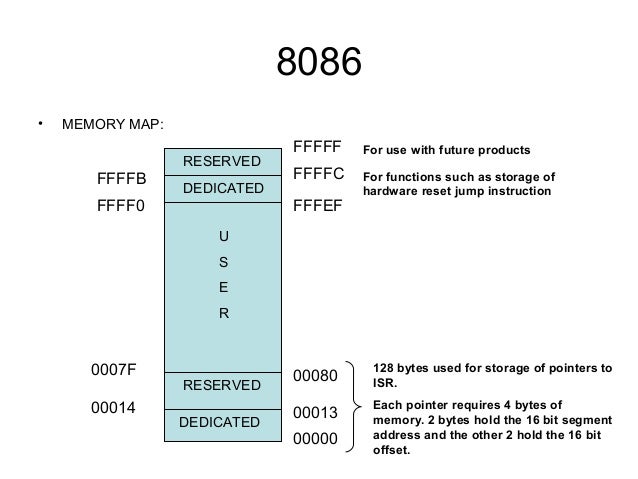In the changing world of technologies, the devices used are also changing. Let us take a look at the changes between 8085 series of microprocessors and 8086 series of microprocessors.

Address space, but not much else. More speed, of course, for the 80286. The 80286 was a place-holder, the 80386 introduced the 32-bit flat address space, which made it a much more attractive base for operating systems. The second generation of x86 16-bit processors, Intel 80286, was released in 1982. The major new feature of the 80286 microprocessor was protected mode. When switched to this mode, the CPU could address up to 16 MB of operating memory (previous generation of 8086 / 8088 microprocessors was limited to 1 MB).
- First, interfacing is explained using the 8086/8088 with some of the more common peripheral components. After explaining the basics, a more advanced emphasis is placed on the 8, 80386, 80486, and Pentium through Pentium 4 microprocessors. Coverage of the 80286, because of its similarity to the 8086 and 80386, is minimized so the.
- A few other differences exist between the 8086/80186 and the 6SX. The 6SX contains a 24-bit address bus (A23–A0) instead of the 20-bit address bus (A19–A0) of the 8086/80186. The 8086/80186 contain an MIO signal, while the 80286 system and 80386SX microprocessor contain control signals MRDC and MWTC instead of RD and WR.
| Serial No. | 8085 microprocessor | 8086 microprocessor |
|---|---|---|
| 1 | The data bus is of 8 bits. | The data bus is of 16 bits. |
| 2 | The address bus is of 16 bits. | The address bus is of 20 bits. |
| 3 | The memory capacity is 64 KB.Also 8085 Can Perform Operation Upto 2^8 ie. 256 numbers. A number greater than this is to taken multiple times in 8 bit data bus. | The memory capacity is 1 MB.Also 8086 Can Perform Operation upto 2^16 ie. 65,536 numbers. |
| 4 | The input/output port addresses are of 8 bits. | The input/output port addresses are of 8 bits. |
| 5 | The operating frequency is 3.2 MHz. | The operating frequency is 5 MHz, 8MHZ,10MHZ. |
| 5 | 8085 MP has Single Mode Of Operation. | 8086 MP has Two Modes Of Operation. 1. Minimum Mode = SingLe CPU PROCESSOR 2. Maximum Mode = Multiple CPU PROCESSOR. |
| 6 | It not have multiplication and division instructions. | It have multiplication and division instructions. |
| 7 | It does not support pipe-lining. | It supports pipe-lining as it has two independent units Execution Unit (EU) and Bus Interface Unit (BIU). |
| 8 | It does not support instruction queue. | It supports instruction queue. |
| 9 | Memory space is not segmented. | Memory space is segmented. |
| 10 | It consists of 5 flags(Sign Flag, Zero Flag, Auxiliary Carry Flag, Parity Flag, Carry Flag). | It consists of 9 flags(Overflow Flag, Direction Flag, Interrupt Flag, Trap Flag, Sign Flag, Zero Flag, Auxiliary Carry Flag, Parity Flag, Carry Flag). |
Attention reader! Don’t stop learning now. Get hold of all the important CS Theory concepts for SDE interviews with the CS Theory Course at a student-friendly price and become industry ready.
Recommended Posts:
If you like GeeksforGeeks and would like to contribute, you can also write an article using contribute.geeksforgeeks.org or mail your article to contribute@geeksforgeeks.org. See your article appearing on the GeeksforGeeks main page and help other Geeks.
Please Improve this article if you find anything incorrect by clicking on the 'Improve Article' button below.
Comparison Between 8085 And 8086
Basic Difference Between 8086 And 80286
